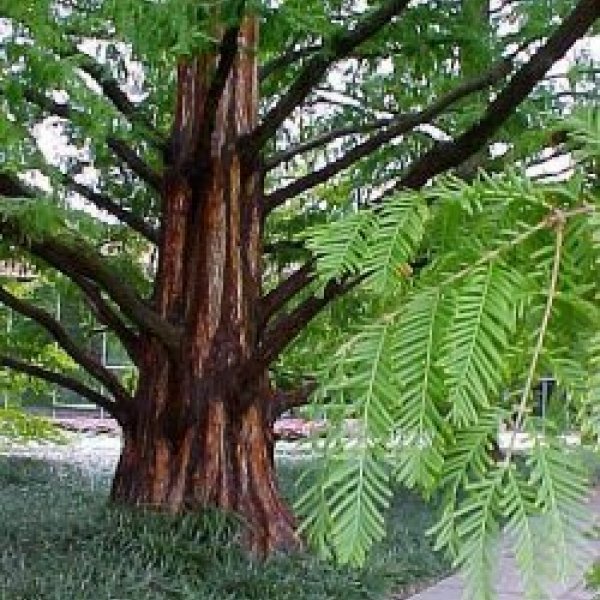
The samples were determined to belong to a tree yet unknown to science, but World War II postponed further study.

In 1943, Wang Zhan (Chan Wang, 1911–2000) of the National Bureau of Forest Research, the Ministry of Agriculture and Forests, Chongqing, collected samples from an unidentified tree in the village of Moudao ( 谋道 镇 formerly Motaochi, Maodaoqi or Modaoxi) in Lichuan County, Hubei province-now believed to be the same tree Kan discovered. This tree formed part of a local shrine, where villagers called it Shuǐshān 水杉 or "water fir". Unfortunately, while he collected some plant material, he did not attempt to identify or publish his findings. Though unaware of Miki's new genus, he recognized the unique traits of the tree. In the same year, Kan Duo (Toh Kan, 1903-1961), professor of Forest Management, National Central University, Chongqing, (formerly Chungking) observed an enormous living specimen while performing a survey in Sichuan and Hubei provinces. He realized he had discovered a new genus, which he named Metasequoia, meaning "like a sequoia". Shigeru Miki from Kyoto University identified a divergent leaf form. While studying fossil samples of the family Cupressaceae, Dr. When the genus Metasequoia was first described in 1941, it was from Mesozoic Era fossils, none of which were less than 150 million years old. Metasequoia glyptostroboides (dawn redwood) bonsai treeĪlthough it was commonly known from the fossil record from across the northern hemisphere, the dawn redwood was considered extinct until the mid-twentieth century.

If the species had been discovered later, it might have become extinct before being investigated. The tree faces considerable risks of extinction in its wild range due to deforestation, however it has been planted extensively in arboreta worldwide, where it has proved a popular and fast-growing ornamental plant. It is a particularly well-known example of a living fossil species. In 1941, the genus Metasequoia was reported by paleobotanist Shigeru Miki as a widely distributed extinct genus based on fossils, before attracting considerable attention a few years later when small populations were found alive in central China. Although the shortest of the redwoods, it can grow to 120 ft (37 m) in height.

It now survives only in wet lower slopes and montane river and stream valleys in the border region of Hubei and Hunan provinces and Chongqing municipality in south-central China, notably in Lichuan county in Hubei. It is the sole living species of the genus Metasequoia, one of three genera in the subfamily Sequoioideae of the family Cupressaceae. Metasequoia glyptostroboides, the dawn redwood, is a fast-growing, endangered deciduous conifer.


 0 kommentar(er)
0 kommentar(er)
